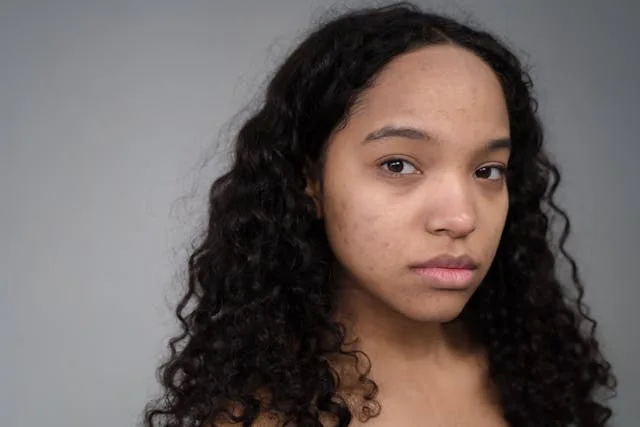If you’ve been battling stubborn breakouts that don’t seem to respond to your usual acne treatments, you might be dealing with something different — fungal acne. Despite the name, yeast acne isn’t actually caused by bacteria but by an overgrowth of yeast on your skin. Understanding this tricky skin condition is the first step toward finally clearing up your skin.
In this Article
What Exactly Is Fungal Acne?
Fungal acne, medically called Malassezia folliculitis or Pityrosporum folliculitis, occurs when a type of yeast called Malassezia multiplies excessively and clogs your hair follicles. This results in itchy, inflamed, small red bumps that often resemble typical acne but behave quite differently.
Unlike regular acne, which is bacterial and often treated with antibacterial products, yeasr acne requires a targeted approach that fights yeast overgrowth [1].
Spotting Fungal Acne: Symptoms to Know
Here are some key signs that what you’re dealing with might be yeast acne:
- Clusters of small, uniform bumps: These bumps tend to be the same size and often appear in groups.
- Itchiness: Unlike regular acne, yeast acne usually causes significant itchiness.
- Common areas affected: Look for breakouts on the chest, back, shoulders, and sometimes the face.
- Resistance to typical acne treatments: If traditional acne creams or cleansers aren’t working, fungal acne could be the cause [2].
What Triggers Yeast Acne?
Certain conditions encourage yeast to multiply on the skin, such as:
- Warm, humid weather and sweat: Yeast thrives in moist environments, so sweating without proper cleansing can worsen Malassezia folliculitis.
- Heavy skincare or haircare products: Oils, silicones, and other occlusive ingredients can trap sweat and oil, creating a perfect environment for yeast growth.
- Antibiotics or immune changes: These can disrupt your skin’s natural balance, making it easier for yeast to take over.
- Poor hygiene habits: While yeast acne isn’t caused by dirt, not showering after sweating or wearing non-breathable clothing can aggravate it.
How to Treat and Prevent Fungal Acne
Treating yeast acne means switching gears from typical acne care. Here’s how:
1. Target the Yeast
Use topical antifungal treatments containing ingredients like ketoconazole, selenium sulfide, or zinc pyrithione. These help reduce yeast growth and calm inflammation.
2. Lighten Your Skincare Routine
Avoid heavy oils and greasy products. Opt for non-comedogenic, lightweight formulas that won’t clog your pores or trap moisture.
3. Keep Your Skin Clean and Dry
Shower promptly after sweating and wear breathable fabrics to reduce moisture buildup.
4. Consult a Professional
If your yeast acne doesn’t improve with over-the-counter options, seeing a dermatologist is essential. They might recommend prescription antifungal creams or oral medications.
Common Myths About Malassezia folliculitis
- Myth: Malassezia folliculitis is caused by poor hygiene.
Fact: It’s caused by yeast overgrowth, not dirt. Over-washing can actually worsen the problem. - Myth: Malassezia folliculitis looks exactly like regular acne.
Fact: Though similar, yeast acne or Malassezia folliculitis is itchier and more uniform in appearance and won’t clear with regular acne treatments.
Takeaway
If your acne isn’t responding to standard treatments, it might be time to consider fungal acne. Understanding this condition is key to finding relief and restoring healthy skin. Adjusting your skincare routine and using targeted antifungal treatments can make a world of difference.
Keep an eye on how your skin reacts, and don’t hesitate to seek expert advice when needed. Your skin deserves a tailored approach that gets to the root of the problem — literally.
Frequently Asked Questions
What is fungal acne and how is it different from regular acne?
Fungal acne is caused by an overgrowth of yeast (Malassezia), unlike regular acne which is bacterial. It appears as itchy, uniform bumps, mostly on the chest, back, and forehead, and doesn’t respond to standard acne treatments.
How do I know if I have fungal acne?
If your breakouts are itchy, appear in clusters, and resist traditional acne treatments, it could be fungal acne. Common areas include the shoulders, chest, and upper back.
What causes fungal acne to flare up?
Hot, humid environments, excessive sweating, use of oily skincare products, and disrupted skin flora from antibiotics can all trigger fungal acne flare-ups.
Can fungal acne go away on its own?
It’s unlikely. Without targeted antifungal treatment, fungal acne typically persists. Over-the-counter solutions with ketoconazole, zinc pyrithione, or selenium sulfide are often effective.
How do I treat fungal acne at home?
Use antifungal body washes or creams, avoid occlusive skincare, wear breathable fabrics, and shower immediately after sweating. Avoid using acne products that don’t target yeast.
Want the latest scoop, exclusive deals, and skincare secrets? Follow us on WhatsApp and never miss a glow-up moment!




